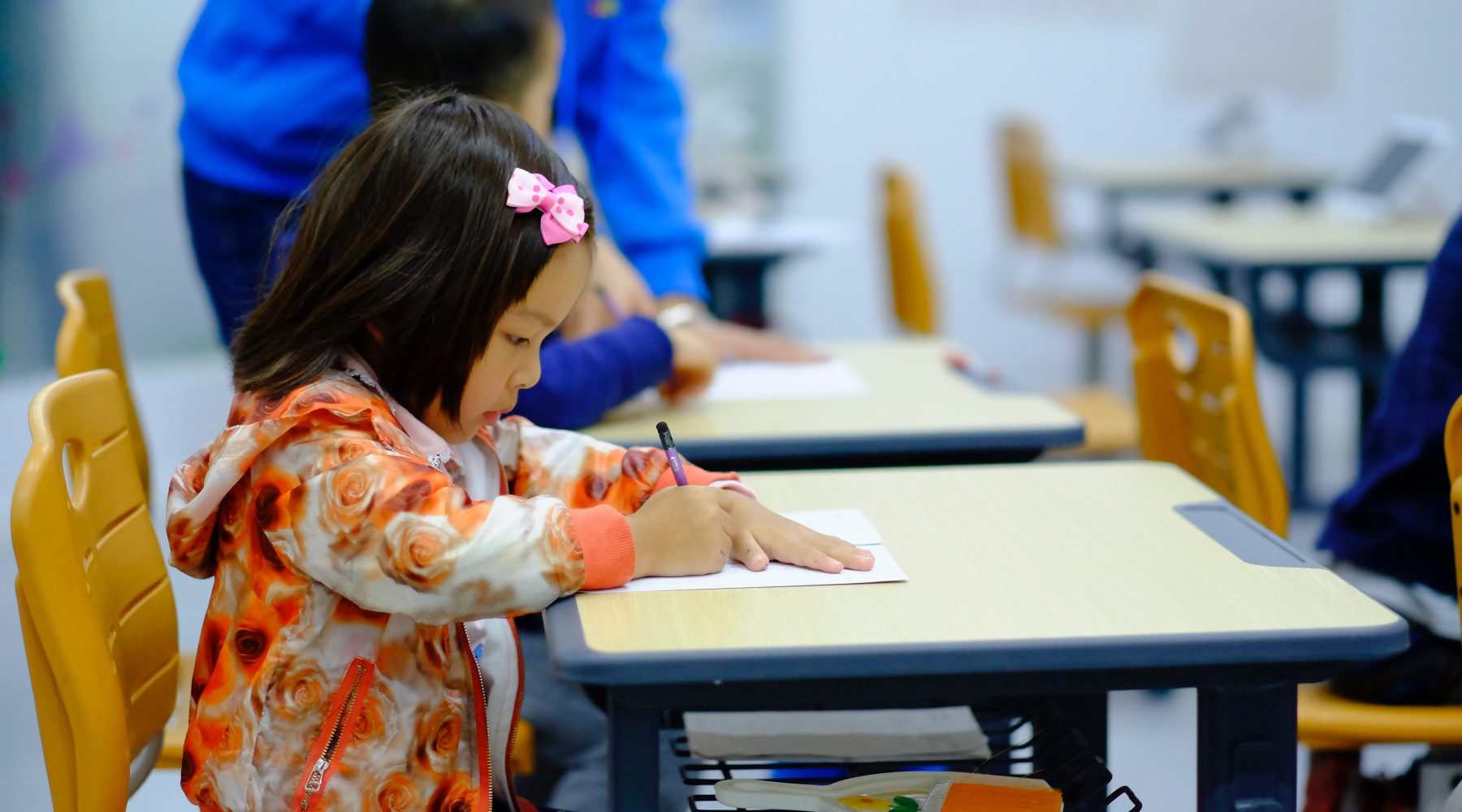School readiness through a contemporary lens

For many early childhood educators, ‘school readiness’ is one of those reluctant conversations that is often had with parents during their child’s orientation to child care. While these conversations provide wonderful opportunities to showcase the abundant experiences in which children engage as part of the daily childcare program, we can’t help but feel deflated when the parents’ response is,‘Yes, but how do you get my child ready for school?’
Unfortunate as it is, there appears to be a firm perception by many parents that a determinant of readiness is their child’s knowledge of the ‘ABCs and 123s’. Despite our best efforts to convince parents that ‘readiness’ is about more than literacy and numeracy skills, things get lost in translation, and we end up finding ourselves resorting back to photocopying stencils and buying into resources that support letter drill activities. This article aims to unpack the notion of ‘readiness’ through a contemporary lens, and explores positive strategies to embrace what should otherwise be a very rewarding process.
Historically, the term ‘school readiness’ has been used in reference to children’s preparedness for formal education, with the belief that up until then, children are merely ‘playing’. Assessed by their ability to engage with content across subject areas such as mathematics and English, it was perceived that, for children, learning officially began when they commenced ‘big school’.
In Australia, this transition still typically happens between four and seven years of age, depending on each state, as it is understood that being mature enough to embark on formal education happens during this period. Despite traditional beliefs, school readiness is not about being able to read, write or count by a certain age; such learning begins at birth and becomes more advanced as children progress in their education, which may or may not be when they start school.
Thankfully, research over the years has helped to shape our current understanding that in order to succeed in any context, school included, children need firstly to feel a strong sense of belonging and self-worth. Other dispositions, such as persistence, sociability and independence, are also considered to be important attributes, which all contribute to school success.
The introduction of the National Quality Standards (NQS) in 2011 has brought about opportunities to review our thinking and put into practice what recent research has revealed about the importance of a meaningful process to school preparation, and not just for children. Supporting documents such as the Early Years Learning Framework (EYLF) clearly communicate that school readiness is a time of ‘transition’, a continuum not unlike any other movement or change; an opportunity for children and their families to explore new routines, new resources and new relationships.
Transitions can also be points of vulnerability and setback if understandings about readiness are in conflict across contexts; therefore, careful consideration about the participation of relevant stakeholders is required. Early childcare educators’ biggest hurdle is being willing to advocate for new approaches with more conviction, and help to shape new understandings about the process, starting with our biggest critics: parents.
A starting point is challenging the traditional myths often associated with school readiness (see below) and becoming better versed about what happens in reality.
Myth 1: Transition is about children getting to know how their schools work.
Reality: Transition is a long and complex process during which children internalise the process of leaving their previous setting and establish their identity in a new setting.
Myth 2: Transition involves a series of school visits.
Reality: School visits provide a short-term orientation to school, but effective transition takes time and builds on a child’s sense of belonging.
Myth 3: Transition is about children making adjustments to school.
Reality: Successful transition depends on the school being able to adjust and respond to children.
Myth 4: Organising transition is the school’s responsibility.
Reality: Planning for transition is a collaboration between many stakeholders, including schools, prior-to-school settings and families
Myth 5: Everyone experiences transition in the same way.
Reality: Transition is unique to each child; one size does not fit all.
Myth 6: Transitions involve the teaching of rules, expectations and school routines.
Reality: Children bring ways of belonging, being and becoming from their home settings. Educators help them build on these to support participation and learning in the school setting.
Myth 7: Transition activities get children ready for school.
Reality: Educators build on children’s prior learning and connect previous and new learning in ways that are meaningful for children.
Myth 8: Transition for parents consists of a school tour and meeting with the lead teacher.
Reality: Leaders and educators across contexts build an inclusive culture with processes that respond to the diversity of the community and include families as partners in transition.
UNICEF recently explored the notion of school readiness conceptually, and determined three dimensions that yield more positive results when operating in tandem: ready children, ready schools and ready families. Ready children are enthusiastic and confident about embarking on new experiences independently. Ready schools are those willing to bridge the gap between early childhood contexts and provide an environment where practices are consistent and philosophy complementary. Ready families have positive attitudes about prior learning, are vocal advocates who are actively involved in the transition process, and make decisions about schooling based on a deep understanding of their children.
This article aims to explore a fourth dimension,‘ready educators’, as it is perceived that the key to a successful transition is understanding the nature of the curriculum’s complexities across each setting. In reality, children can be immersed in a program that promotes autonomy and fosters agency, and, within a few weeks, can move into a context where explicit syllabi outcomes across key learning areas are implemented, removing the autonomy and agency previously fostered.
It’s no wonder that there are so many associated anxieties with school transition. It therefore stands to reason that educators from each context should know more about what the others do; however, there seems to be a lack of understanding about what curriculums stipulate, or the processes that support children’s learning. If we look at the achievement outcomes across Australian Curriculum Standards and compare them to the outcomes in the EYLF, it is clear how the learning developed in prior-to- school contexts prepares children to engage with the school curriculum. It thus makes sense to look at ways to use the structures of school curriculum and build them into curriculum experiences in the prior- to-school context.
This needn’t be a complicated process, but rather a meaningful experience that offers further professional growth for the educator. As a starting point, it is important to build familiarity about the school curriculum and begin to make connections between EYLF and K-6 Syllabus outcomes.
Intentionally implementing experiences that draw from both curriculum documents will not only prepare children for the types of experiences that they will engage in at school, but it will also go a long way to answering the question:‘What do you do to prepare my child for school?’
There are endless possibilities to such an approach, and when implemented in a meaningful way, they offer more opportunities than complexities to progress the child’s learning from the prior-to-school to school environment. Embracing such new ways of thinking is the key to a successful journey for all concerned.
This article originally appeared in BELONGING EARLY YEARS JOURNAL-VOLUME 3 NUMBER 1. 2014 and is republished here with the authors permission.
Popular

Quality
Practice
Research
Crayola Creativity Week 2026 launches as research highlights strong link between creativity and confidence
2026-01-06 07:00:35
by Contributed Content

Research
New study finds social dominance preferences emerge in early childhood
2026-01-06 07:30:50
by Fiona Alston

Workforce
Events News
Practice
Provider
Quality
Research
Mary MacKillop Announced as Finalist for FIA 2026 Best Transformational Gift Award
2026-01-06 06:30:50
by Fiona Alston












